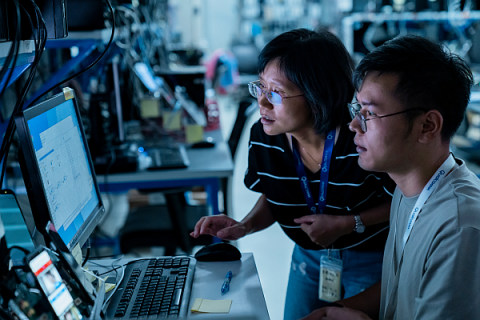Solutions Resources
Procedure for training, converting and running a DeepLab model for image segmentation
Semantic segmentation involves applying a label, such as “tree,” “flower,” “grass” or “house,” to every pixel in an image. It is useful in applications like changing the background of an image. DeepLab-v3 is a...
Attaining deeper understanding of images for machine learning models
Some computer vision models can detect objects, determine their shape and predict the direction in which they will travel. For example, such models are at work in self-driving cars. Three important tasks undertaken by computer...
Tools for deeper, more efficient analysis of images
Image segmentation is the task of partitioning an image into multiple segments for easier analysis. Google’s DeepLab-v3 has led to a major improvement in object detection using machine learning. Its semantic segmentation is able to fetch more...
The lifecycle of traditional software is arguably quite straight forward. At its simplest, you develop, test, and deploy the software, and then release a new version with features, updates, and/or fixes as needed.
Tools included in Qualcomm Neural Processing SDK
Besides prediction accuracy, two other important aspects of creating a model are low inference time and low memory consumption. Tools in the Qualcomm® Neural Processing SDK™ are designed to help developers and machine learning engineers analyze and...
Testing the app on the mobile device
The previous part of this pipeline covered using the TensorFlow low-level API and supported layers from the Qualcomm® Neural Processing SDK for AI to train a facial expression recognition model. Then it covered how to convert the model to the deep learning...
Pre-processing the data set, training the model and running inference on the desktop
Multiple techniques have been proposed for facial expression recognition (FER), technology designed to identify facial expressions like anger, disgust, fear, happiness, sadness, surprise and no emotion (neutral...
Using a CNN to detect facial keypoints and use them in applications with face filters
Face filters, which overlay facial photographs with funny objects, have become commonplace. They are used extensively in social media applications. The technique behind this filter application is facial...
Test scenarios and test cases for an ML model and app to detect drowsiness
Drowsiness and its effects on driving form the context for this series of test scenarios and test cases. The objective is to test a computer vision-based application that identifies drowsiness by monitoring changes in...
Using computer vision and AI to recognize facial expressions and enhance vehicle safety
The combination of computer vision and AI is a powerful tool in detecting a person’s state of mind through facial expressions. It is especially useful in an automotive scenario where it can assist or alert...
Code samples and explanations for detecting facial expressions
Detecting and localizing human faces paves the way for facial expression recognition (FER), which has many applications ranging from entertainment (face filters) to driver safety (emotion analysis).
With the Qualcomm® Neural...
Training, evaluation, testing and accuracy
Model training
Model training for deep learning includes splitting the dataset, tuning hyperparameters and performing batch normalization.
Splitting the dataset
The data collected for training needs to be split into three different sets:...
Black-box testing and oracles
Black-box testing of machine learning (ML) models refers to testing with no knowledge about the internal details of the model, such as the algorithm used to create it and the features in it. The main objective of black-box testing is to ensure the quality of the...
Ensuring model quality
In the context of machine learning, the goal of testing is to ensure the model is performing accurately. Although testing machine learning models is different from testing conventional software, the same design techniques are applicable.
The following pages describe...
Steps for using feeds from front and rear cameras for prediction
Following the steps below, you can set up a multi-camera stream with model prediction on a device running a Snapdragon® mobile platform.
Using live frames in the model
The procedure streams live frames to the machine learning...
Using a hardware development kit and external camera for object detection and location
The Qualcomm® Neural Processing Engine (NPE) is a runtime for the execution of deep neural networks. The engine is accelerated through its tight integration with a Snapdragon® mobile platform.
The following...
Parameters, hyperparameters, regularization and optimization
In the process of training deep learning models in frameworks compatible with the Qualcomm® Neural Processing SDK, it is a good idea to improve models through tuning and hyperparameter optimization. Why? In any machine learning (ML)...
Tips for developers working on machine learning apps on Android
1. Model training and conversion
Machine learning frameworks have specific formats for storing neural network models. The Qualcomm® Neural Processing SDK includes tools for converting pre-trained models to the Deep Learning...
Mobile app development with machine learning models
The Qualcomm® Neural Processing SDK for AI is a tool to optimize performance of trained neural networks on Snapdragon® mobile platforms.
To begin working with the SDK, download it from the Tools...
How to build and run a sample AI application from Android Studio
Setting up the AI Android project
The steps below are designed to prepare you to develop an AI-based Android mobile app using Android Studio.
First, follow the “Install Android Studio” guide on the Android developer site. It will...

